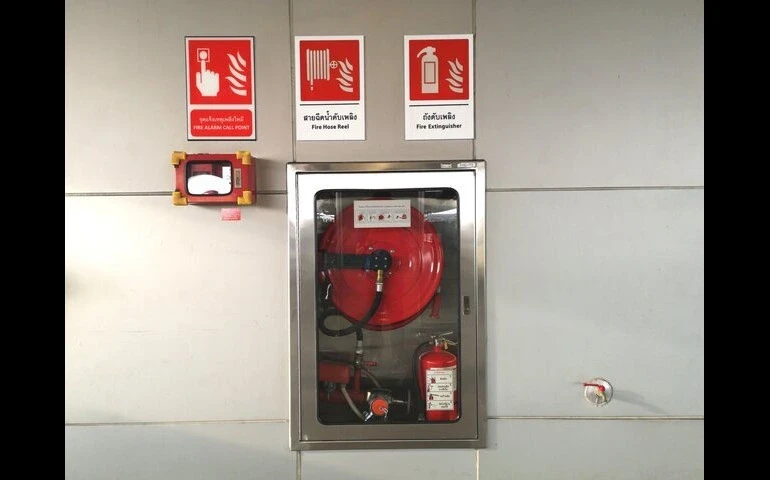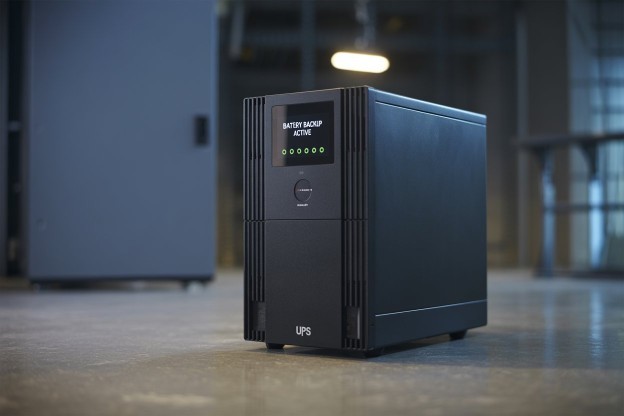For any commercial property, fire poses a major risk. Because they serve as the first line of defence, identifying fires early and warning everyone to flee immediately, fire alarm systems are crucial. This can reduce harm and save lives. However, there are several choices available when it comes to fire alarms. This article examines the conventional and addressable systems, which are the two primary types utilised in commercial buildings. Knowing their main distinctions will enable you to choose the one that best suits the fire safety requirements of your company.
What is an Addressable Fire Alarm System?
Addressable fire alarm systems represent a refined and intricate approach to fire detection and alert mechanisms. These systems deliver heightened functionality and adaptability, making them well-suited for expansive commercial edifices and facilities with intricate layouts.
Unique Device Identification
Unlike traditional systems, addressable systems permit the individual recognition and allocation of addresses to each fire alarm device. Every device, be it a smoke detector or pull station, possesses a distinct address programmed into the system.
Exact Location Pinpointing
Through addressable systems, the control panel can precisely determine the triggered alarm's exact location, pinpointing the specific device that detected the fire. This precision enables swift response times and more efficient evacuation protocols.
Wiring and Communication
Addressable systems use digital communication protocols like multiplexing or loop wiring to link devices to the control panel. This setup facilitates streamlined data transmission and heightened dependability in comparison to conventional systems.
Pros
- Zone Flexibility
- Advanced Capabilities
- Scalability
- Accurate Location Identification
Cons
- Elevated Cost
- Complexity
- Compatibility Issues
- Dependency on Power Supply
What is a Conventional Fire Alarm System?
The conventional fire alarm system stands as the prevailing type of fire detection mechanism. It finds common application in smaller structures such as shops, residences, and restaurants. This system also proves to be a suitable option for people operating within a budget. A conventional fire alarm consists of one or more circuits interconnected in parallel. These systems are straightforward to install, seamlessly compatible with devices from various renowned manufacturers, and do not necessitate intricate configurations.
When defining a fire occurrence within a building, each level is often separated into a separate zone. For example, a three-story structure could be divided into three zones, with each zone including a series of initiating devices such as detectors and call points connected by wiring.
A notable drawback of the conventional fire alarm system lies in its limitations in pinpointing the precise fire location within a zone. Given that multiple devices are linked to each zone, a fire alarm alert would merely indicate that a particular zone has been triggered, without specifying the exact device responsible for the activation. In emergencies, time is of the essence, and any delay could potentially result in severe harm to both individuals and property within the premises.
Pros
- Cost-Effective Alarm Panel and Devices
- Ease of Installation
- Seamless Integration Across Different Brands
- Ideal for Compact Sites Where Individual Device Location is Not Critical
Cons
- Inability to Precisely Identify Fire Location
- Potential Costliness of Wiring and Installation
Read more: How to Choose the Best Fire Alarm System for Your Building?
Conventional vs. Addressable Fire Alarm Systems: What is the Difference?
Following are the major differences between conventional and addressable fire alarm systems.
1. Wiring
In conventional systems, zones function as circuits, whereas addressable fire alarm panels communicate through a dedicated communication circuit with each individual field device. To clarify, addressable systems utilize a singular wire connecting all devices to the fire alarm control panel, while conventional systems involve distinct wires for each device, each linking back to the control panel. Addressable systems need less cabling compared to conventional systems since each detector possesses a unique address.
2. Location detection
In conventional fire alarm setups, multiple devices share a zone. Consequently, if any device within that zone triggers an alarm, the panel will display a "Zone Alarm" notification, specifying the affected zone by its assigned number. While this notification indicates the general area of the alarm, it does not pinpoint the exact location, as any device within that circuit could be the source. Subsequently, manual inspection of devices in that area is required to identify the triggering device.
Addressable systems enable the assignment of a distinctive address, usually a three-digit number, to each field device. This information is then relayed to the panel, detailing the precise location and type of device that activated the alarm. This streamlined process significantly enhances response times for emergency services or building occupants.
3. Cost
Conventional fire alarm systems may have a lower initial purchase cost but can incur higher installation expenses due to the extensive wiring required. The installation process for conventional systems is more time-consuming and necessitates a greater quantity of wires.
On the other hand, addressable fire alarm systems, although more advanced in functionality, entail lower installation costs. Addressable systems can prove to be more cost-effective in the long term considering their superior fire detection accuracy, which aids in averting fire-related damages. Additionally, these systems exhibit a reduced tendency to issue false alarms, minimizing the associated costs and disruptions.
4. Functionality
In terms of functionality, addressable fire alarm panels are notably more sophisticated, providing enhanced control and flexibility. Referred to as "intelligent" fire alarm systems, these setups are renowned for their reliability in contrast to conventional fire alarm panels regarding false alarms. While conventional fire alarm systems are effective, they do have limitations in the breadth of protection they offer.
5. Possibility of False Alarms
As discussed earlier, false alarms can be financially burdensome for fire departments and emergency responders, consuming resources, and time, and posing the risk of potential injuries. Conventional systems are prone to false alarms triggered by dust and contaminants, complicating the determination of genuine emergencies. The arrival of first responders is required to ascertain the legitimacy of the alarm activation. Addressable systems exhibit enhanced reliability in mitigating false alarms by promptly relaying critical information to the control panel, expediting the fire localization process within the building.
6. Safety Considerations
Addressable systems provide an elevated level of safety and protection by pinpointing the precise location of potential threats. They amalgamate notifications, trouble alerts, and supervisory signals to audibly guide building occupants during fire incidents. The reduced occurrence of false alarms aids in alerting occupants to genuine emergencies, prompting immediate responses.
7. Reliability
Addressable systems are esteemed for their reliability, attributed to their wiring configuration; both ends of the connection link to the control panel. This dual-ended setup ensures operational continuity, as even if one end is compromised, the alternate connection remains functional in transmitting data to the control panel. In contrast, conventional systems may experience operational disruptions if a wire is damaged or severed.
8. Scalability
A fundamental contrast between the two systems lies in their scalability. Addressable systems exhibit remarkable flexibility compared to conventional counterparts. Irrespective of the quantity of devices, an addressable system can accommodate the load. Whether necessitating several hundred devices, an addressable system is equipped to manage this expansion seamlessly.
Also read: Fire Alarm Systems: Uses, Maintenance & Safety Tips
Conclusion
Electra stands as a prominent supplier of fire alarm and suppression systems in Qatar, offering high-quality solutions suited to the different needs of residential, commercial, and industrial customers. Our commitment to excellence is shown in the cutting-edge and contemporary items we offer, all of which have undergone rigorous quality testing to ensure dependability and efficiency.
With a strong emphasis on regulatory compliance and appropriate safety standards, Electra has established itself as a dependable partner for business in a variety of industries, including education, healthcare, defense, government, and information technology. Our selection of fire alarm and suppression systems, which includes NOVEC systems, sprinklers, dry powder systems, and Deluge systems, meets a wide range of requirements.
As a certified company by the Qatar Civil Defense Authority (QCDD), Electra excels in the design, installation, and distribution of fire alarms and fire suppression systems, instilling confidence in clients regarding adherence to compliance and safety benchmarks. From residential complexes to towering structures, our solutions are versatile and adaptable, ensuring comprehensive defense against fire hazards.






